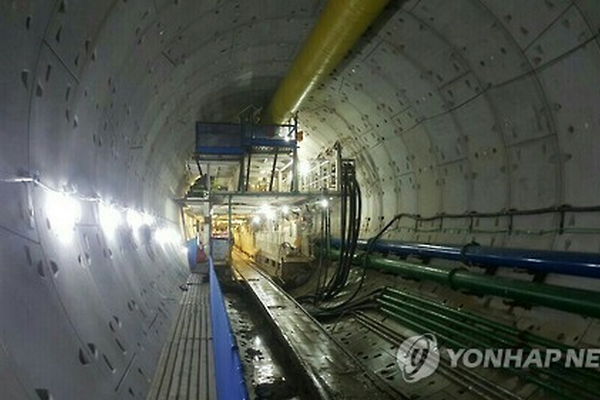Olympic Games are always a key moment for global megalopolis as the spotlights swing to their organization and ability to host such an event.
The XXIII Winter Olympic Games in Pyeongchang, South Korea have come to an end and the effervescence around this international event was palpable. Located in the Gangwon province with its capital at Chunchen, the county of Pyeongchang is bounded on the east part by the East Sea. The province’s harsh landscape is dominated by Taebaek Mountains where many sky resorts exist as well as Buddhist temples.
As part of Korean government’s effort to expand transportation infrastructures for the Olympics, Korea’s high-speed railway system, known as Korea Train eXpress (KTX) has been extended to PyeongChang for the Olympics by constructing new line: GyengGang Line.
Due to the mountainous topography of GangWon province, the KTX extension project consisted of construction of 34 tunnels, totaling 76 km in length, including two major tunnels DaeGwanRyeong tunnel and GangNeung tunnel.

DaeGwanRyeng tunnel, 21.7 km in length, constructed by the conventional drill and basting method, is the longest railway tunnel in Korea and the 8th longest mountain tunnel in the world.
In order to minimize environmental impact to Taebaek Mountains, the tunnel was constructed at an average cover depth of 400 m with a maximum depth of 700 m.
The tunnel excavation work began in June of 2012 and was completed in November of 2015 with a total construction cost of 500 million USD.
This project was separately awarded to three consortiums: Hyundai E&C, Halla Corporation, and Samsung C&T, by Korea Railway Network Authority (KRNA), the owner, on a design and build basis.

GangNeung Tunnel
GangNeung tunnel is the last tunnel to have been completed along the stretch of the extension project.
Total length of the tunnel is 2.8 km and runs across the GangNeung city center.
A 1.2 km long section is an underwater tunnel excavated though the riverbed of NamDaeChun river using a 8.4m diameter slurry shield TBM with an average depth of 37 m.
This project was awarded to Samwhan Corporation consortium by Korea Railway Network Authority (KRNA), the owner, on a design and build basis.
The tunnel excavation work began in November of 2015 and was completed in October of 2016 with a total construction cost of 120 million USD.

The new GyengGang Line is now 120.3 km long and operates from Seoul to GangNeung and connects Incheon International Airport to GangNeung station within two hours, providing more than 50% time saving compared to other transportation options.
About the ITA: Founded in 1974 by the initiative of nineteen Nations, the International Tunnelling and Underground Space Association (ITA) which aims are to encourage the use of the subsurface for the benefit of public, environment and sustainable development and to promote advances in planning, design, construction, maintenance and safety of tunnels and underground space, by bringing together information thereon and by studying questions related thereto. Since then, ITA has considerably developed. Presently, ITA gathers 74 Member Nations and 300 corporate or individual Affiliate Members.
